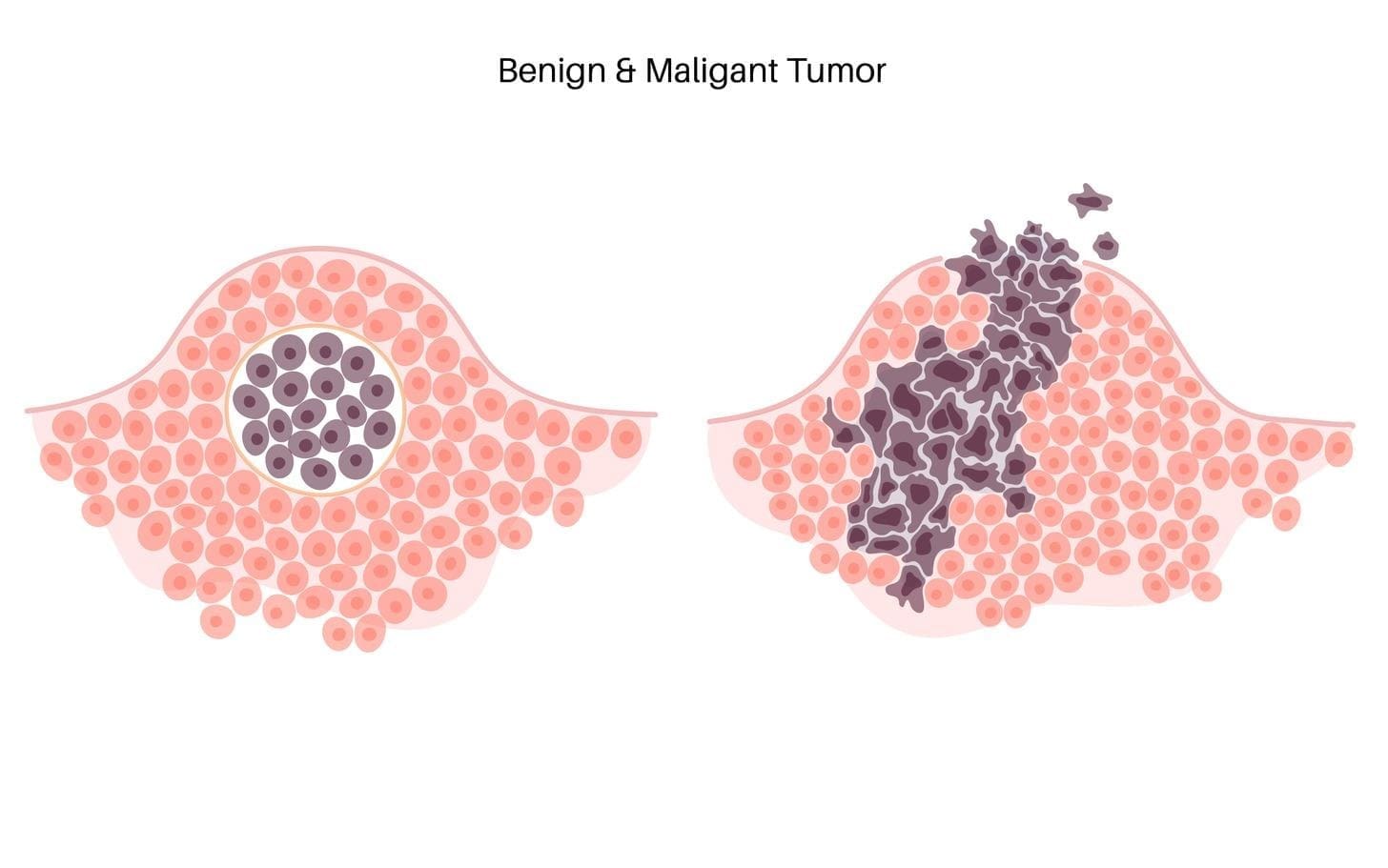Last Updated on November 26, 2025 by Bilal Hasdemir

Back pain affects about 75-85% of Americans at some point, says the American Association of Neurological Surgeons (AANS). For those with chronic back pain, radiofrequency ablation (RFA) is a promising treatment. It uses heat to target and stop pain signals from nerves, helping with chronic lumbar or facet joint pain. Read patient radiofrequency ablation patient reviews, its pain relief success, and long-term results.
Radiofrequency ablation has been shown to offer relief for 6 to 12 months for some. But how long the relief lasts can vary. Patients need to know what to expect before trying this treatment.
Key Takeaways
- RFA is used to treat chronic back pain by disrupting pain signals to the brain.
- The procedure can provide relief for 6 to 12 months or longer.
- Success rates vary depending on the treated area, such as the sacroiliac joint or facet joint.
- Pain may recur as nerves regenerate, but the procedure can be repeated.
- Patients report mixed results, with some experiencing significant relief.
Understanding Radiofrequency Ablation for Back Pain

Radiofrequency ablation is a new way to treat back pain without surgery. It’s getting attention for helping people with long-lasting back pain.
What is Radiofrequency Ablation?
RFA uses radiofrequency energy to heat nerves that send pain signals. This method aims to stop these nerves from sending pain, helping patients feel better.
Common Conditions Treated with RFA
RFA helps with chronic low back pain caused by several issues, like:
- Facet joint arthropathy
- Sacroiliac joint dysfunction
- Vertebrogenic changes visible on MRI
These problems can hurt a lot. Doctors might suggest RFA if other treatments don’t work.
| Condition | Description | RFA Effectiveness |
| Facet Joint Arthropathy | Degenerative changes in the facet joints | High |
| Sacroiliac Joint Dysfunction | Inflammation or degeneration of the sacroiliac joint | Moderate to High |
| Vertebrogenic Pain | Pain originating from the vertebral bodies | Varies |
The Evolution of RFA Technology
RFA technology has grown a lot, making it safer and more effective. Today’s systems can target nerves more precisely, leading to better results and fewer side effects.
With ongoing improvements, RFA might help even more people with chronic back pain in the future.
The Science Behind Nerve Ablation Procedures

Nerve ablation procedures, like radiofrequency ablation, work by stopping pain signals. Radiofrequency ablation (RFA) uses heat to target and damage nerve tissue. This stops pain signals from reaching the brain.
How Radiofrequency Energy Disrupts Pain Signals
Radiofrequency energy heats the targeted nerve tissue. This heat creates small lesions on the nerve. These lesions block pain signals, giving patients relief.
The procedure is precise, thanks to imaging guidance. This ensures the RFA electrode is placed correctly.
RFA’s success comes from its ability to target specific pain nerves. This approach minimizes damage to other tissues, reducing complications.
Targeted Nerve Tissues in Back Pain Treatment
In treating back pain, RFA focuses on the medial branch nerves. These nerves carry pain signals from the facet joints to the brain. By ablating these nerves, RFA can greatly reduce facet joint pain.
- The medial branch nerves are the primary target for RFA in treating facet joint pain.
- RFA can be used to treat pain in various regions of the spine, including the cervical, thoracic, and lumbar areas.
- The procedure is often used for patients who have not responded to conservative treatments or those with chronic pain.
Nerve Regeneration Process
RFA can lead to nerve regeneration. Over time, the nerves can grow back, causing pain to return. This process can take months to years, giving many patients long-term relief.
Patients need to know that RFA is not a permanent fix for everyone. Relief times vary, and some may need more treatments.
Step-by-Step: How Do They Burn the Nerves in Your Back?
Learning about the radiofrequency ablation (RFA) procedure for back pain can seem tough. But by breaking it down step-by-step, it becomes easier to understand. The RFA procedure is usually done under local anesthesia to make it less painful.
Pre-Procedure Preparation
Before starting the RFA, patients get a detailed medical check-up. This makes sure they’re right for the procedure. They look at their medical history, current meds, and any allergies. It’s key to follow the doctor’s advice on meds and fasting before the procedure.
- Stop certain medications that may interfere with the procedure
- Arrange for someone to drive you home after the procedure
- Wear loose, comfortable clothing
Imaging Guidance and Needle Placement
The RFA procedure needs precise needle placement. This is done under imaging, like fluoroscopy or CT scans. Using imaging makes the procedure safer and more effective.
Application of Controlled Radiofrequency Energy
With the needle in place, a special electrode is inserted. Then, controlled radiofrequency energy is applied to the nerve tissue. This heats the tissue, stopping pain signals to the brain. This step is key to long-lasting pain relief.
Post-Procedure Care
After the procedure, patients are watched for a short time for any immediate issues. Some soreness at the needle site is common and usually goes away in a few days. Following the post-procedure instructions carefully is important for a smooth recovery.
- Rest for the remainder of the day
- Avoid strenuous activities for a few days
- Follow up with your doctor as instructed
By understanding the RFA procedure in these steps, patients can better prepare for a successful outcome.
Radiofrequency Ablation Patient Reviews: Success Rates and Satisfaction
Patients who get radiofrequency ablation for back pain have different results. Some feel a lot better, while others don’t see much change. It’s important to know what makes this treatment work for some people but not others.
Positive Patient Experiences
Many patients say they feel a lot less pain after the treatment. A study in the Journal of Pain Research showed that over 60% of people got a big pain relief. People often talk about how easy the procedure is and how fast they can get back to normal.
- Reduced pain levels
- Improved mobility
- Enhanced quality of life
One patient said, “I had chronic back pain for years, but after RFA, I recovered fast and felt much better.” Stories like this show RFA can really help the right patients.
Mixed or Negative Outcomes
Not everyone gets the same results from radiofrequency ablation. Some might feel a little better for a short time, while others might not feel any difference. Why this happens can include the type of back pain, how well the needles were placed, and how each person feels pain.
Some patients also talk about side effects like numbness or more pain. For example, one patient said, “The procedure was not too painful, but I had numbness for weeks.”
Factors Influencing Patient Satisfaction
Several things can affect how happy a patient is with radiofrequency ablation. These include:
- How well the diagnosis matches the treatment
- The skill of the doctor doing the procedure
- What the patient hopes to get from the treatment
- The care they get after the procedure
By picking the right patients and understanding what makes RFA work, doctors can make more people happy with the treatment. As we learn more, we’ll keep making this treatment better for everyone.
How Long Does Radiofrequency Ablation Last?
The time pain relief lasts from Radiofrequency Ablation (RFA) varies a lot. Some people feel better for months, while others might not last as long.
Usually, RFA’s pain relief lasts 6 to 12 months. Studies show this is common. But results can change based on many things.
Typical Duration of Pain Relief
Studies say most people feel pain relief for 6 to 12 months. A lot of patients see big improvements in this time. But it’s important to remember this is just an average. Results can vary a lot.
Factors Affecting Duration
Many things can change how long RFA lasts. These include:
- The condition being treated
- How the patient reacts to the treatment
- The RFA procedure method
- Any other health issues
Knowing these factors helps set realistic expectations and improve treatment results. Healthcare providers can tailor treatments better when they understand these points.
Signs That Relief is Diminishing
When RFA’s effects fade, pain can come back. It’s key to notice when relief starts to fade. This way, you can plan for more treatments or other pain management plans. Signs include:
- Pain getting worse
- Pain is coming back like before
- Other pain treatments are not working as well
Knowing how long RFA lasts, what affects it, and when relief fades helps both patients and doctors manage chronic back pain better.
Clinical Evidence Supporting Ablation for Back Pain
Radiofrequency ablation is a treatment for chronic back pain. It has a lot of clinical evidence backing it up. Studies show it works well, but results can vary based on the pain cause and who gets it.
Key Research Studies and Their Findings
Many studies have looked into RFA’s effectiveness for back pain. A big study in the New England Journal of Medicine showed it helps a lot with chronic low back pain. Another study in the Journal of Pain Research found that it greatly improves pain and function for sacroiliac joint pain patients.
These studies help build the case for using RFA for certain back pain types. They guide doctors on how to treat chronic back pain.
Effectiveness for Different Types of Back Pain
RFA works well for different back pain types, like facet and sacroiliac joint pain. It targets and stops pain signals from specific nerves.
Facet Joint Pain: Studies show RFA gives big relief for facet joint pain, a common cause of chronic low back pain.
Sacroiliac Joint Pain: RFA also helps with sacroiliac joint pain. It’s a good option for those who didn’t get better with other treatments.
Comparing RFA to Other Pain Management Approaches
Comparing RFA to other treatments, it stands out in some ways. It’s considered for those who didn’t get better with other treatments like physical therapy or medications.
- RFA lasts longer than steroid injections, which only give temporary relief.
- It’s less invasive than surgery and has fewer risks.
- It’s great for those who can’t or don’t want to have surgery.
In summary, the evidence for RFA in treating back pain is strong. More studies are coming out, showing it works for specific back pain types. As more evidence comes in, RFA will likely stay a key treatment for chronic back pain.
Lumbar RF Ablation: Specifics for Lower Back Pain
For those with chronic lower back pain, lumbar RFA is a hopeful solution. It targets the nerves that carry pain signals. This procedure is minimally invasive and is popular for treating facet joint pain in the lower back.
Unique Considerations for Lumbar Procedures
Lumbar RFA aims to target specific nerves in the lower back. It uses precise imaging to place the needle correctly. Fluoroscopy is often used for this purpose.
The anatomy of the lumbar region varies among people. It’s important to customize the procedure for each patient. The patient’s health, the severity of their condition, and past treatments are all considered.
Success Rates for Lumbar Facet Joint Pain
Research shows RFA can effectively treat lumbar facet joint pain. While success rates vary, many patients see a big drop in pain. The procedure’s success depends on accurate needle placement and the patient’s condition.
- Many patients report significant pain relief.
- Quality of life improves due to less pain.
- Success rates can differ based on individual factors.
Recovery Timeline for Lumbar RFA
The recovery time for lumbar RFA is usually short. Most people can go back to normal activities within a few days. Some might feel temporary discomfort or numbness, but these usually go away on their own.
After the procedure, it’s important to watch for signs of infection. Pain can be managed with medication if needed. Follow-up visits are scheduled to check how well the treatment is working and to address any concerns.
When RFA Pain Management Doesn’t Work: Alternative Options
For those who don’t find relief with Radiofrequency Ablation, there’s hope. RFA works for many, but it’s not for everyone.
It’s important to know about other treatments for back pain. This section looks at options for those who didn’t get better with RFA. We’ll talk about who might not be a good fit for RFA and other treatments.
Identifying Poor Candidates for RFA
Not everyone is right for RFA. Some reasons include:
- Complex or multifocal pain
- Previous unsuccessful back surgery
- Certain medical conditions that contraindicate RFA
- Psychological factors influencing pain perception
Knowing these factors early helps find better treatments.
Alternative Interventional Procedures
For those not good for RFA or who didn’t get better, other treatments are available:
- Spinal Cord Stimulation (SCS): A device sends electrical impulses to the spinal cord, possibly reducing pain.
- Intraspinal Drug Delivery Systems: Medication is given directly into the spinal fluid for pain relief.
- Kyphoplasty or Vertebroplasty: These are minimally invasive procedures to stabilize vertebral fractures.
These options can help a lot of people.
Complementary Approaches to Back Pain Management
Complementary therapies are also key in managing back pain:
- Physical Therapy: Custom exercise programs to improve mobility and strength.
- Cognitive Behavioral Therapy (CBT): Helps manage the psychological side of chronic pain.
- Acupuncture: An ancient method using thin needles in specific body points.
- Yoga and Mindfulness: Combines physical movement with mindfulness to reduce pain and improve well-being.
These methods can be used with other treatments to better manage pain.
In conclusion, while RFA is helpful for back pain, it’s not the only choice. For those who didn’t get better with RFA, there are many other treatments and therapies. These offer new ways to find relief from pain.
Repeat RFA Procedures: What to Expect
If you’re dealing with back pain again after an initial Radiofrequency Ablation (RFA) treatment, you might need another procedure. Research shows that repeat RFA can help keep the pain away. But the more times you have it, the less it might work.
Timing for Repeat Procedures
When you might need another RFA depends on a few things. This includes your health and how long the first treatment helped. RFA can last from 6 to 12 months, but it’s different for everyone.
Several factors can affect when you need another procedure:
- The cause of your back pain
- Your health and how you reacted to the first treatment
- If your symptoms have changed or gotten worse
Changes in Effectiveness with Multiple Treatments
Even though repeated RFAs can help, they might not work as well each time. This shows why choosing the right treatment for you is so important.
A study in the Journal of Pain Research showed that the first RFA helped a lot. But the next ones didn’t work as well for everyone.
| Treatment Number | Average Pain Relief Duration | Success Rate |
| 1st RFA | 9 months | 80% |
| 2nd RFA | 7 months | 70% |
| 3rd RFA | 5 months | 60% |
Long-Term Considerations for Repeated Nerve Ablation
Thinking about getting RFA again? It’s key to think about the good and the bad long-term. This means looking at the chance of nerve damage or other problems from doing it again.
Things to consider long-term include:
- Watching for nerve damage
- Thinking about other ways to manage pain
- Talking to your doctor about the risks
Conclusion: Is Radiofrequency Ablation Right for Your Back Pain?
Radiofrequency ablation is a treatment for back pain that works well for many. It’s not for everyone, but it can help those with chronic pain.
When thinking about RFA, consider your own situation. Look at why you have back pain, your health, and what treatments you’ve tried before.
Knowing what RFA can and can’t do helps you decide. Always talk to a doctor to see if it’s right for you.
In the end, RFA can be a big help for back pain. It can give long-lasting relief and make life better for many people.
FAQ
What is Radiofrequency Ablation (RFA) for back pain?
Radiofrequency Ablation (RFA) is a procedure that helps with chronic back pain. It uses heat from radiofrequency energy to “burn” nerves. This stops pain signals from reaching the brain.
How long does Radiofrequency Ablation last for back pain?
RFA can offer relief for 6 to 12 months. Some people may feel pain relief for up to 2 years.
How do they burn the nerves in your back during RFA?
A needle is placed near the nerve under imaging. Then, radiofrequency energy heats the nerve. This “burns” the nerve, stopping pain signals.
What are the common conditions treated with RFA?
RFA treats chronic back pain from facet joint arthritis and sacroiliac joint dysfunction. It also helps with pain in the lower back, neck, and other areas.
Is RFA a permanent solution for back pain?
No, RFA is not permanent. The nerves can grow back, and pain may return. This might need repeat treatments.
What are the success rates for lumbar RFA?
Lumbar RFA success rates vary. Studies show it helps 60% to 80% of patients with lumbar facet joint pain.
Can I undergo repeat RFA procedures?
Yes, you can have a repeat RFA if the first treatment wears off. But the results may not be the same each time.
What are the alternative options if RFA doesn’t work?
If RFA doesn’t work, you might try other treatments. These include steroid injections, spinal cord stimulation, or surgery. You could also try physical therapy, acupuncture, or pain management programs.
How long does it take to recover from lumbar RFA?
Recovery from lumbar RFA is usually quick. Most people can go back to normal activities in a few days. Some might feel soreness or numbness at the treatment site.
Is RFA right for my back pain?
RFA might be good for chronic back pain that hasn’t improved with other treatments. But talk to a healthcare professional to see if it’s right for you.
References
- Manchikanti, L., Pampati, V., Falco, F. J., & Hirsch, J. A. (2024). Therapeutic effectiveness of lumbar facet radiofrequency ablation: A retrospective analysis of long-term outcomes. Pain Practice, 24(4), 372–380. https://www.sciencedirect.com/science/article/abs/pii/S1529943024004091






